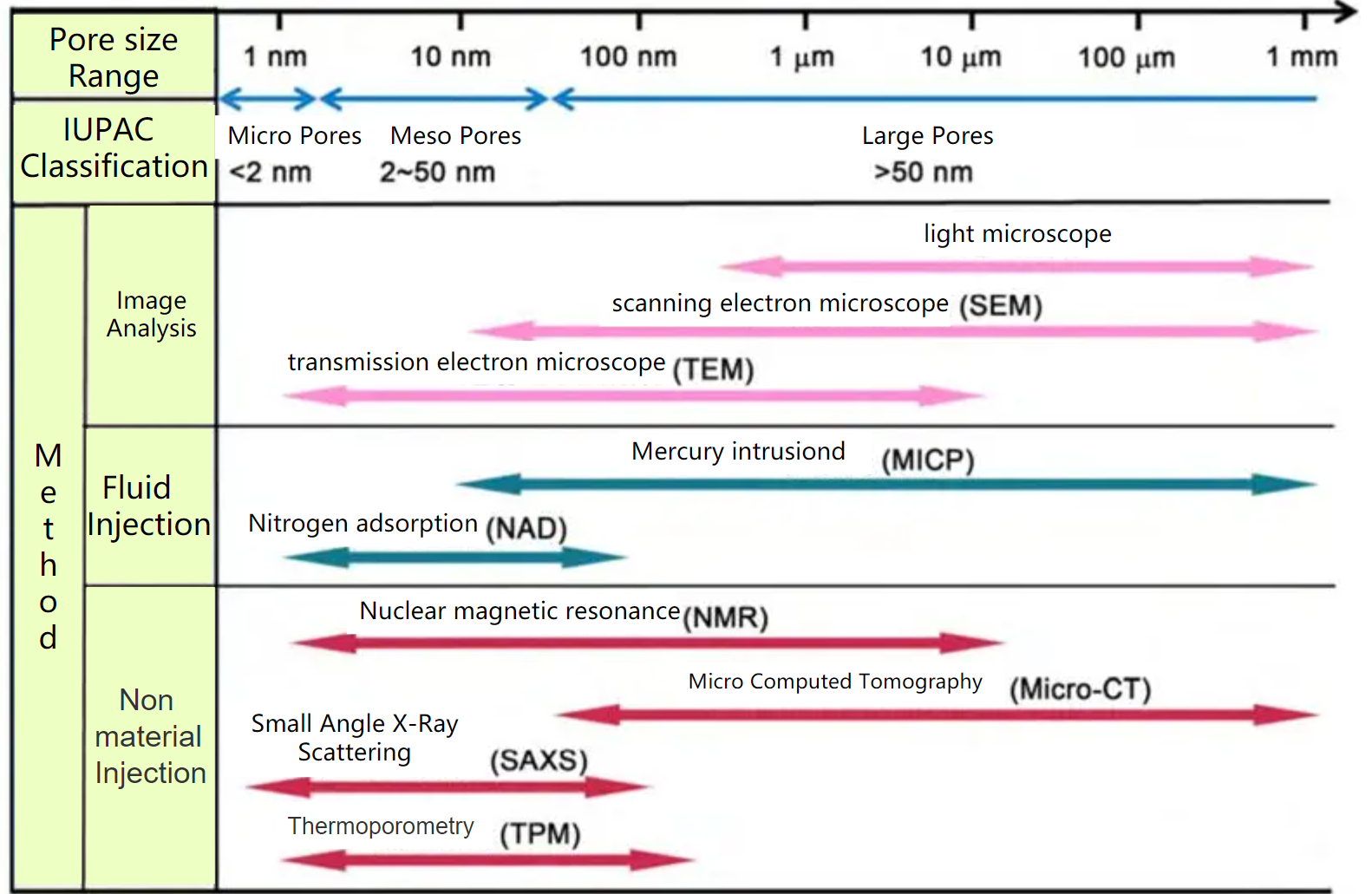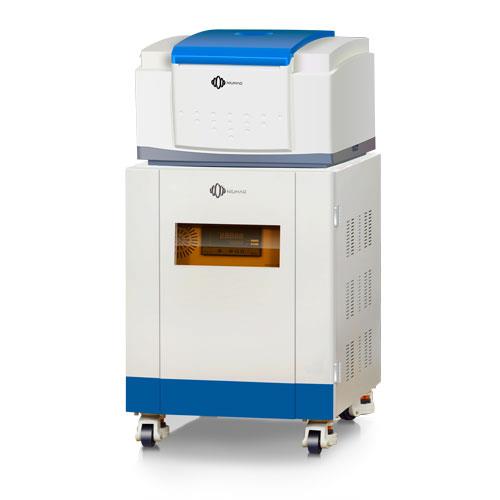Распределение пор по размерам ЯМР-анализатор
The распределение пор по размерам важная характеристика материалов, особенно в таких областях, как материаловедение, химия, и геология. Это может существенно повлиять на свойства и поведение материала., включая его проницаемость, площадь поверхности, адсорбционная способность, и механическая прочность.
Распределение пор по размерам Методы измерения
Существует несколько методов и приемов, используемых для определения распределение пор по размерам. Некоторые из часто используемых методов включают в себя:
- Ртутная интрузивная порометрия: Этот метод включает погружение образца в ртутную ванну и применение возрастающего давления, чтобы заставить ртуть проникнуть в поры.. Путем измерения объема ртути, проникшей при различных давлениях., тот распределение пор по размерам можно определить.
- Адсорбция газа: Методы адсорбции газа, например, адсорбция азота с использованием метода Брунауэра-Эммета-Теллера. (ДЕЛАТЬ СТАВКУ) метод, может предоставить информацию о конкретной площади поверхности и распределение пор по размерам из пористых материалов. Изотермы адсорбции, полученные при различных относительных давлениях, можно анализировать с использованием различных моделей., такие как Барретт-Джойнер-Халенда (БЖХ) метод или теория функционала плотности (ДПФ), определить распределение пор по размерам.
- Капиллярная поточная порометрия: Этот метод включает в себя нанесение на образец смачивающей жидкости и измерение скорости потока через материал.. Метод капиллярной порометрии может предоставить информацию о распределение пор по размерам и связь пор.
- Электронная микроскопия: Сканирующая электронная микроскопия (КОТОРЫЙ) или трансмиссионная электронная микроскопия (ТЭМ) может использоваться для исследования поверхности и внутренней структуры материалов при большом увеличении.. Эти методы могут предоставить качественную информацию о распределение пор по размерам.
Распределение пор по размерам Измерение методом ЯМР
В ЯМР, образец подвергается воздействию сильного магнитного поля, который заставляет ядра определенных атомов в образце выравниваться по магнитному полю или против него.. Радиочастота (РФ) затем импульс подается на образец, что заставляет ядра поглощать энергию и возбуждаться. Когда радиочастотный импульс выключен, ядра возвращаются в исходное состояние, высвобождение поглощенной энергии в виде электромагнитного излучения. Это излучение улавливается антенной, и полученный спектр ЯМР предоставляет информацию о химических и физических свойствах образца..
В случае горного ядра распределение пор по размерам анализ, ЯМР можно использовать для изучения свойств минералов и жидкостей в образце породы.. Спектр ЯМР дает информацию о количестве атомов водорода в образце., их химическая среда, и количество жидкости, присутствующей в образце. Эту информацию можно использовать для определения пористости., проницаемость, и жидкостное содержание породы, а также состав и строение присутствующих минералов..
Распределение пор по размерам Преимущества измерений методом ЯМР
Ядерный магнитный резонанс (ЯМР) прибор имеет ряд преимуществ как метод изучения свойств молекул и материалов.:
Неразрушающий: ЯМР — это неразрушающий метод, который позволяет анализировать образцы без изменения их химических или физических свойств..
Универсальный: ЯМР можно использовать для изучения широкого спектра материалов., в том числе органические соединения, неорганические соединения, полимеры, белки, и даже неповрежденные клетки.
Количественный: ЯМР может предоставить количественную информацию о концентрации и распределении различных компонентов в образце..
Структурная информация: ЯМР может предоставить подробную структурную информацию о молекулах., включая их трехмерные формы, межатомные расстояния, и химическая среда.
Высокое разрешение: ЯМР имеет высокое разрешение и позволяет различать различные химические группы в образце., даже в сложных смесях.
Никакого радиационного воздействия: В отличие от других аналитических методов, таких как рентгеновская кристаллография, ЯМР не предполагает воздействия ионизирующего излучения., что делает его более безопасным как для пользователя, так и для образца.
Минимальная подготовка проб: ЯМР требует минимальной подготовки проб., часто требуется только растворить образец в подходящем растворителе.
Распределение пор по размерам ЯМР Ниумага
Распределение пор по размерам ЯМР относится к серии приборов ЯМР, производимых Niumag Corporation..
В приборах Niumag NMR используется низкопольное, конструкция с постоянным магнитом, обеспечивающая высокую чувствительность и разрешение при сохранении компактных размеров и доступной стоимости.. Эти инструменты обладают множеством функций, включая автоматическое шиммирование, контроль температуры, и удобный интерфейс для анализа и обработки данных.
Приборы Niumag NMR можно использовать для различных целей., например, контроль качества, исследования и разработки, и мониторинг процессов. Они особенно полезны для анализа состава., состав, и свойства материалов, в том числе полимеры, химикаты, продукты питания, фармацевтика, и геологические образцы.
Приборы Niumag NMR доступны в нескольких моделях с различной напряженностью поля и размером образца., начиная от 0.5 Тесла в 2.0 Тесла. Эти инструменты широко используются в научных кругах., исследовательские лаборатории, и промышленных условиях для различных приложений в области материаловедения, химия, геология, и другие поля.
 заплесневелый
заплесневелый

